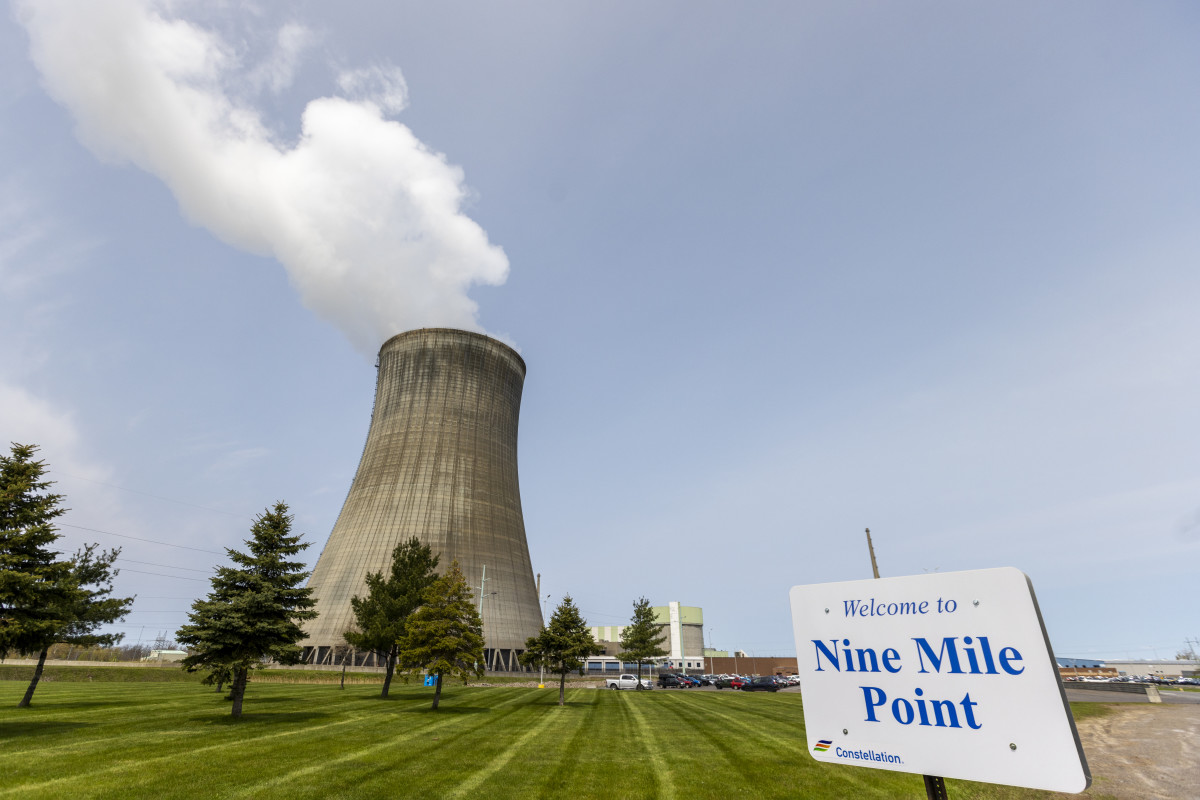Nuclear names have been killing it, and Oklo (OKLO) has become the breakout narrative.
The stock’s rise can be attributed to a simple theme: its “micro-reactor for the data-center decade” story has clicked with the moment.
Why the heat?
Big Tech’s massive AI compute needs firm, round-the-clock electrons, and nuclear is perhaps one of the few scalable, carbon-free options.
💵💰Don’t miss the move: Subscribe to TheStreet’s free daily newsletter💰💵
Oklo’s pitch is simple: Its robust and compact reactors are tailor-made for the data-center era, and it has turned a niche idea into a mainstream market story.
Crucially, this isn’t a typical utility tale.
Oklo finds itself at the tech-energy intersection, receiving early validation from OpenAI’s Sam Altman (who relinquished the chair role in April 2025) and a cap table that’s drawn interest from high-profile names like Palantir founder Peter Thiel and deep-tech backers like DCVC and even Y Combinator lineage.
All of that basically sets the table for Wall Street’s latest take. Goldman Sachs just dropped a blunt assessment of Oklo with big implications.

Bloomberg/Getty Images
Goldman says Oklo sits at the start of a nuclear revival
Goldman Sachs analyst Brian Lee isn’t calling a top on nuclear; he feels the sector is in the “early stages of a resurgence”.
More Wall Street:
- Ray Dalio sends Wall Street a crucial $37.5 trillion message
- Tesla stock falters, but UBS points out competitive advantages
- Goldman Sachs resets S&P 500 target for rest of 2025
Favorable U.S. policies and soaring electricity demand from data centers are two of the biggest tailwinds that pure-plays like Oklo are trying to ride.
Still, Lee isn’t pounding the table. He initiated coverage of Oklo with a Neutral rating and a $117 price target, suggesting the stock’s already fairly valued after its stunning run.
Shares have soared roughly 1,300% in the past year and more than 311% in the past six months alone. However, they’re now trading over 26 times their forward book value (Book value is a company’s total assets less its total liabilities).
Related: Jim Cramer shares 7 stocks you should buy now
The big opportunity, Lee argues, lies in Oklo’s early-mover advantage in small modular reactors.
Oklo has built a pipeline of over 14 gigawatts, one of the largest order backlogs in the U.S.. However, the fine print matters too, as Oklo hasn’t signed a single power purchase agreement (PPA) yet, while remaining a pre-revenue business.
Lee also flagged some major execution risks.
Oklo’s plan to own and operate its Aurora Powerhouse design gives it greater control but also entails a ton of funding. Lee estimates the company will need to raise about $14 billion through the mid-2040s before it can have enough of its own cash.
Quick Takeaways
- Goldman Sachs analysts feel nuclear is in the “early stages of a resurgence.”
- Oklo stock up 1,300% in a year, but analyst Brian Lee rated Neutral with a $117 target.
- Pipeline tops 14 GW, yet the company is still in the pre-revenue stage with no PPAs.
- Oklo may need to raise $14 billion through the 2040s to fund its expansion.
Washington’s support and AI boom lift nuclear energy
Nuclear’s policy tailwinds are firmly in place as AI supercharges load expansion.
The EIA, for instance, forecasts that U.S. electricity usage will top 4.19 trillion kWh in 2025 and 4.31 trillion in 2026, blowing past the 2024 record, on the back of data centers shifting power demand from flat to rising.
Related: Palantir lands surprise AI deal with 109-year-old titan
Nowhere is that shift more evident than at PJM Interconnection, operator of the U.S.’s largest electric power grid. Data centers could potentially add 30 GW of peak demand by 2030, which is equivalent to dozens of utility-scale plants.
Washington has moved to clear roadblocks.
For instance, the ADVANCE Act (2024) tells the Nuclear Regulatory Commission (NRC) to efficiently modernize licensing for advanced reactors while reducing certain applicant fees. Similarly, the Inflation Reduction Act’s 45U gives existing nuclear output a floor with a 0.3¢/kWh base credit (up to 1.5¢ with labor rules), which stabilizes the fleets that can provide a 24/7 supply.
Fuel is a big part of the plan.
The Department of Energy’s HALEU program targets near-term availability of a whopping 21 metric tons by June 2026, de-risking early deployments relying on advanced fuels.
Policy under Trump is even more explicit about firm power.
The Trump Administration is effectively pressing to defer coal retirements, ramp up nuclear production, and potentially restart reactors to meet AI demand, with talk of 100 GW of excess firm capacity in five years.
Globally, the IEA sees data-center demand doubling to a mind-boggling 945 TWh by 2030.
Quick Takeaways
- EIA: U.S. power demand surges past the 2024 record in 2025–26.
- PJM: data centers add 30 GW peak load by the end of the current decade.
- Policy stack: ADVANCE Act, 45U credit; HALEU by 2026.
- Trump policy: Bullish on firm capacity with nuclear in the mix.
Related: Goldman Sachs drops shocking call on the economy through 2030
#Goldman #Sachs #delivers #5words #surging #nuclear #stock